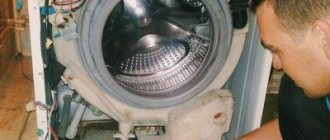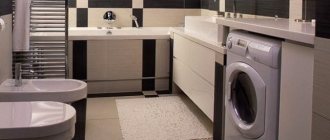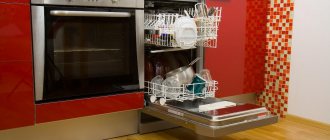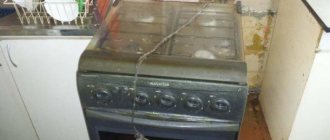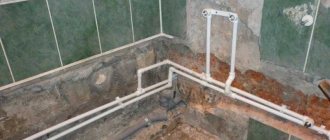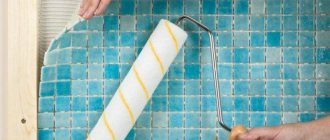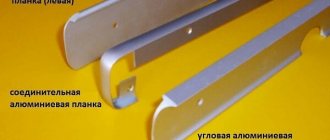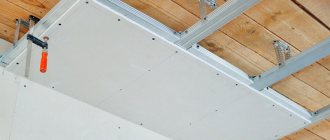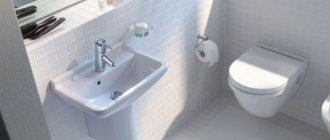Convenient and reliable automatic washing machines are successfully used in city apartments, where there is always a good pressure of cold water and a sewerage system. But rural residents and summer residents continue to use outdated models that require manual filling and draining, citing the impossibility of proper water supply with modern devices. Let's consider how to connect an automatic machine without a central water supply in order to be able to use the benefits of civilization.
Poor pressure - what to do?
Residents of small towns and villages usually experience problems with the quality of water supply. If the water pressure at the outlet of the water pipe is below the minimum - and it is different for each model - then washing will not start. There are two solutions to the problem:
- Buy an SMA with a water tank - it works without connecting to a water supply.
- Install pressure injection equipment. We need a miniature pumping station. To implement the plan, a booster pump for the washing machine is needed. The cost of pumping devices is in the range of 3,000–5,000 rubles.
Previously, SMA had a more loyal system - when water filled the tank, the timer started the process. The system responded only to receiving the required amount of liquid. Today, washing machines have become more complex. Europeans love quality standards, so they have special requirements for incoming resources. If the pressure does not meet the minimum threshold, the equipment does not work.
Installation of a compact blower
The easiest way to connect a washing machine is with a small-sized and inexpensive pressure pump. In this case, a simple scheme is used. It consists of three elements: a water tank – a pump – a washing machine hose.
You need to purchase the pumping device itself (it costs no more than 1 thousand rubles), adapters for it, two meters of cable (with two cores) and silicone-based sealant (with its help you will fix the adapters). It is advisable to buy a pump of the same brand as your automatic washing machine. In this case they will be completely compatible.
Pumping device for connecting an automatic washing machine
Important nuance! The pumping device should be taken with a cover (assembled). If you are offered only an impeller and a motor, refuse such a purchase. Most modern washing machines have a water supply hose with a 3/4 inch thread. The pump does not have such a connection. Therefore, adapters need to be purchased specifically for 3/4 inches. You can stock up on sealant at any auto store. Buy the silicone compound that you like.
Next, do everything according to the given scheme:
- Make a hole in the water container using a regular electric drill and install adapters into it.
- Be sure to treat the entry point of the transition devices with sealant. This compound will take about 22–24 hours to dry.
- Use coarse sandpaper to clean the tubes on the purchased pump that are necessary for connecting the adapters. Lubricate the latter with sealant and pull them onto the tubes.
- Solder (or connect with terminals) the wires going to the pump contacts. This area should be additionally protected with special tubes (they are called heat-shrinkable).
- Wait for the silicone adhesive to dry, and then connect the pump to the washer.
Now feel free to start the washing machine (don’t forget to fill the container with water). When the unit needs water, you will need to connect the installed pump to a 220-volt outlet. That's all. Use your washing assistant in a country house where there is no running water.
What water pressure is needed for a washing machine?
The water supply to the automatic washing machine must be carried out under a pressure that is not lower than the value specified in the technical documentation. The SMA developers decided that quickly filling the tank is a prerequisite for productive washing. Europe and Japan have their own standards of living, which have no place for problems with water supply. Russia is not limited to megacities, and somewhere in the outback people are not even aware of water supply standards.
A lack of pressure does not always result in a refusal to work; sometimes, the SMA starts up, but all processes go slowly: the tank takes a long time to fill, the powder is poorly washed off, and the quality of the wash decreases. Let's find out what pressure is needed for an automatic washing machine, depending on its brand:
- SMA from Zanussi, Electrolux, LG, Samsung and Daewoo - 0.3 bar. There are models with intake valves rated at 0.4 bar. The work depends a lot on the software.
- Ariston, Beko, AEG, Indesit, Candy and Whirlpool - 0.4 bar. Many “Indesites” work at lower values.
- Bosch and Miele generally require 0.5 bar.
- Kuppersbusch - 0.8–0.9 bar. There are models operating at 0.5 bar.
In rural water supply systems, the pressure is 0.1 bar or even less.
Laundry outside the city
Many summer cottages do not have running water, so various devices are used:
Portable ultrasound devices.
This method is convenient for small amounts of laundry and washing delicate items. The most famous ultrasonic device is Retona.
retona
Semi-automatic machine
When using, you must manually fill and drain water. It is small in size and weight, which allows you to place it without any problems. The lack of some functions is compensated by low price and high maintainability.
Semi-automatic washing machine
Handwash
For this method, you only need a water container, a washboard and a cleaning product of your choice. The downside is the time and amount of physical labor.
It should be noted that quality is very dependent on temperature. And with heating there may be difficulties. In addition, you need quite a lot of rinsing water to remove the foam.
What pressure does the pump create?
There are different models of pumping equipment on the market. Let's look at the most popular options. The proposed equipment increases the pressure to 3.5–6 bar. All models have overheating protection.
- Wilo PB-088EA. Costs 3,800 rubles. 3.5 bar. Temperature - 2–60 °C. Installation - horizontal or vertical. Throughput - 2.4 cubic meters/hour.
- Grundfos UPA 15-90. Price - 5,500 rubles. Passes 1.5 cubic meters/hour. Installation - vertical. For clean water only. 6 bar. Noise - 35 dB.
- Gilex Jumbo 60/35 P-24. Price - 5,400 rubles. 3.6 cubic meters/hour.
- Marina Cam 80/22. Surface pumping station. Costs about 9,000 rubles.
The maximum pressure in the above models is 9.8, 35 and 32 m, respectively.
Benefits of Friendly Service
- Our team employs only professionals, highly qualified specialists who have proven their knowledge and skills in practice. The craftsmen have extensive experience in working with Gorenje brand models.
- We do not use cheap analogues in our work, because we are confident that the result of the repair largely depends on the quality of the components.
- We accept urgent requests for washing machine repairs. The master arrives at the client’s home or dacha on the day of the request or at any time convenient for the customer.
- The quality of servicing household appliances at home or in the country is no worse than repairing appliances in a workshop. Our technicians have professional equipment for diagnosing and restoring washing machines.
Prices for our services remain attractive for users of universal household appliances. We also advise customers on the operation and maintenance of water tank washing machines over the phone.
How to choose?
It is quite difficult for an ordinary consumer to understand the water pumps offered. You shouldn’t completely trust sellers and consultants; they can sell you on an expensive pumping station that you don’t need. How to buy suitable equipment:
- Select equipment for specific conditions.
- Give preference to well-known manufacturers. Cheap pumps may break down after a month or two.
- Be interested in the noise level, otherwise over time you may encounter inconvenience from a loud device.
Classification of pumps by control method:
- Manual. Manual on/off.
- Automatic. Triggered based on sensor readings.
Checking the contents and documents
Take the instructions, which will indicate all the components for the machine. These include hoses, plugs, warranty document and operating instructions
It is very important that the availability fully matches the records
Documentation must be verified. Instructions for use must be detailed, in Russian. The warranty card checks the date of completion and year. The serial number of the washing device and model are also indicated here. Any violation in the execution of this document will be a prerequisite for refusal to service the machine.
If there are no problems with the documents, you can carry out further inspection.
How to connect a pressure booster pump to the water supply?
The injection device is mounted on a pipe in front of the water intake points. If the pressure is weak, the pump will turn on and increase it. Connection order:
- Mark the pipe to which the injection device is to be connected according to its length, also take into account the length of the adapters.
- Next, turn off the water supply and cut the pipe according to the markings.
- External threads are made on both sides of the pipe.
- Screw the adapters onto the pipes.
- Screw fittings into the adapters - they come complete with the pump.
During installation, check the instructions, also pay attention to the arrows on the body - flow direction indicators.
- A cable is supplied from the electrical panel. It is advisable to make an outlet near the location of the equipment. It is better to connect the pump through an RCD (residual current device).
- They test the equipment, paying attention to the joints - there must be absolute tightness. To strengthen the joints, tow or FUM tape is wound around the threads.
Useful tips
When installing a pump for an automatic machine that increases the inlet pressure, follow the installation rules that will extend the service life of the equipment:
- Place a mechanical filter at the inlet - it will trap dirt and rust particles. If solid particles get into the washing machine water pump, they will cause it to break down.
- To prevent vibration of the pumping equipment, check the quality of the fasteners in time, and if necessary, tighten them.
Standard connection cars automatic
Selecting a location
So, you have become the owner of a brand new automatic washing machine. Now all that remains is to connect it with your own hands to the water supply and sewerage system. But, before you do this, you must first find a suitable place for it.
In standard city apartments there are not so many options, so in most cases washing machines are placed in the following rooms:
- In the kitchen;
- In the toilet;
- In the bathroom or combined toilet.
When choosing a place to go, be guided by the following rules:
- You need to ensure a free approach to the installed device.
- The device should not interfere with movement.
- It should be possible to connect the water supply to the machine and connect the drain.
Once the location has been clarified, it is possible to begin the upcoming actions.
Unboxing
Manufacturers pack complex household appliances, such as washing machines, very carefully so that they are not damaged during transportation. Based on this, before installing the device, it is necessary to free it from the original packaging and remove the bolts that secure the drum.
In addition, you need to remove the plugs, which are used to protect the holes from liquid getting into them. Keep the bolts as they may be needed in case of equipment transportation.
The procedure for removing all transport elements is contained in the instructions, which are necessarily attached to each product. If you carefully follow the diagram, you will be able to unpack and connect the equipment without any trouble.
Connection to water supply
Most washing car models can only be operated if an uninterrupted water supply is ensured. To do this, the device is connected to the water supply using an inlet hose, which is supplied with the machine.
There is a special hole on the back of the machine to connect the hose to the machine.
Its other end must be connected to the water supply as follows:
If the system does not provide a special outlet, you need to buy a ball valve with two outlets or a pipe tee and a simple ball valve.
- After this, you need to turn off the water in the system and install the tap in a suitable place. This procedure depends on the material from which the water supply is made. If, for example, the pipes are made of polypropylene, a special soldering iron will be required to install the fitting.
- After inserting the tap, you need to connect the hose to it by screwing the union nut onto the thread.
In fact, this completes the procedure for connecting to the water supply.
Connection to sewerage
There are two methods to connect the washing machine to the sewer:
| Through plumbing fixtures | For this purpose, the drain hose has a special hook that allows you to attach it to the edge of the bathtub, sink or even toilet. This method is the simplest, but not very ergonomic. |
| Stationary | To do this, purchase a special siphon with two inputs, which is connected to the nearest sink or washbasin. One input of this device is designed specifically for the machine. |
In most cases, owners of washing cars prefer the second method, but it is temporarily possible to remove the drain through the nearest plumbing fixture.
When to add water?
During normal operation, the inlet valve receives a signal from the control module. As a result, the valve opens and the liquid is filled. If the pump is turned on and the valve remains closed, an emergency situation occurs. For the convenience of supplying water to the washing machine, the following option is offered:
- Unscrew the screws on the top cover. Remove the cover and underneath it is the valve.
- There are 2 wires suitable for the valve, to which terminals are connected. The latter are connected to 2 wires leading out. They are connected to the power supply according to the diagram below.
- The output is a relay. It is connected to the pump. It turns out to be a kind of water pressure machine for the pump. A connection has appeared between the valve and the pumping device - as soon as the machine gives a signal to draw water, the relay is activated and the pump starts working. This scheme is easy to implement without the help of specialists. It will allow you not to sit near the device, watching it fill.
How the assistant works
Before installing a household appliance for your dacha, you need to understand how automatic equipment works. Water enters through a special hose. It is connected to a hose with a special valve. According to a given program, the valve opens, water under a pressure of 6–7 atmospheres enters the compartment with the powder, and from there to the tank. Draining is carried out automatically; it can be organized into a cesspool or a container of at least 50 liters.
We determined that pressure is needed to supply water. If it is not there, the valve will close and the equipment will go into standby or turn off. You can create artificial pressure for a dacha without running water using a pump or tank.
What if you don't have running water?
There are machines that do not need a high-pressure hose, a pump, or even a water supply. Similar cars are produced by the Slovenian brand Gorenje. A tank of 100 or more liters is attached to their body. The user fills the container himself. And then the washing begins, as in a regular SMA.
Machines with reservoirs have a built-in pressure pump. The pressure is enough for effective washing - its quality is not inferior to that of conventional models. Depending on the displacement, one container is enough for several cycles. There are few offers on the market - only a few models.
Such modifications have a significant disadvantage - the container has a narrow neck, through which it is problematic to wash it. But compared to the fact that this SMA allows you to wash without running water, this is a trifle.
Connection options
As mentioned earlier, we will consistently talk about the most common ways in which an automatic washing machine without running water will definitely work. And we’ll tell you about the method that, in our opinion, is optimal. We will let you choose which one is better.
How can you set up the system?
- The easiest way out is to pour water directly into the powder bin with your own hands. At the same time, a washing machine can do without running water, especially its mechanical version. By and large, the technology doesn’t care where the water is poured from, as long as the tank is filled and the level sensor works.
- The problem is that after each cycle the unit will turn off and wait for you to come running with a bucket and pour water into it through a watering can. And running with a bucket is not the easiest thing, it turns out to be semi-automatic.
Standard filling hose.
You can resort to a similar, but slightly improved method. Remember the principle of communicating vessels and place the tank on a hill. But in order to create pressure sufficient for the automation to operate, the tank will need to be raised to a height of about 10 m. And again, carry water there with your own hands.
Machine diagram.
- All questions like how to connect a washing machine if there is no running water disappear if you have a pumping station. Even the simplest unit with low power is quite capable of providing the pressure necessary for the operation of the machine. Everything is good here, except for one thing: the price of a simple pumping station starts from 5,000 rubles, plus filters and fittings for it.
- If a washing machine in a village without running water is connected through the station, then it makes sense to buy a pumping station. In summer it will be useful for irrigation, and in winter it will supply drinking water to the house. For seasonal use, the option is quite expensive.
- But there is, in our opinion, the best and at the same time low-budget option. Its meaning is to install an additional pump, which will simulate the operation of a pumping station and automatically fill the tank with water. Instructions for self-assembly will be covered in the next chapter.
Pumping station.
Intermediate pump installation
Before installing an automatic washing machine without running water, you will need to take care of two main things. The first thing you need is a water container. According to experienced summer residents, the best option would be to place a standard two-hundred-liter barrel next to the machine. Of course, economical units can get by with 100 liters, but there won’t be any extra reserve here.
The second device you can’t do without is a small water pump. If you are not a great expert in this equipment, we advise you to go to a store that sells spare parts for automatic machines and purchase a pump. It is better to take a pump from the manufacturer whose machine you have.
Powder hopper.
Next, in order not to overload the pump, we recommend installing a ball valve into the bottom of the barrel. It is to this that the intake hole of the unit will be connected. The pipe from which water will be pumped under pressure is connected to the inlet hose.
Submersible aquarium pump option.
Next comes the most important part. We need to connect the pump to the network and at the same time make it so that it turns on when necessary
If you remember, at the beginning of the story we mentioned that any machine has a solenoid valve that opens when the tank is filled.
This valve operates from a 220V network and is in the open position only when operating voltage is applied to it. This is an ideal option for us. It is necessary to remove the top cover of the machine and connect the pump in parallel to the solenoid valve.
Parallel connection of valve terminals.
This can be done directly at the valve terminals or trace where the wire goes, as a rule, it is in the lower part of the housing and parallel the valve and pump on the terminal block.
As a result, we will have a washing machine that does not require a connection to the water supply. At the moment when you need to fill the tank, the automation gives the command to apply voltage to open the valve. But we connected a pump to it in parallel, as a result they turn on simultaneously and water flows into the tank. When the tank is full, the system turns off both units. (See also the article Pumps for water supply from a well: features.)
The video in this article shows a similar installation option for an intermediate pump.
